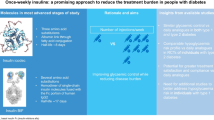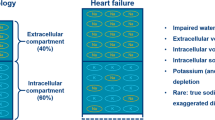Abstract
Introduction
Overdoses of beta-adrenergic antagonists and calcium channel antagonists represent an uncommonly encountered but highly morbid clinical presentation. Potential therapies include fluids, calcium salts, vasopressors, intravenous lipid emulsion, methylene blue, and high-dose insulin. Although high-dose insulin is commonly used, the kinetics of insulin under these conditions are unknown.
Case Report
We present a case of a 51-year-old male who sustained a life-threatening overdose after ingesting approximately 40 tablets of a mixture of amlodipine 5 mg and metoprolol tartrate 25 mg. Due to severe bradycardia and hypotension, he was started on high-dose insulin (HDI) therapy; this was augmented with epinephrine. Despite the degree of his initial shock state, he ultimately recovered, and HDI was discontinued. Insulin was infused for a total of approximately 37 hours, most of which was dosed at 10 U/kg/hour; following discontinuation, serial serum insulin levels were drawn and remained at supraphysiologic levels for at least 24 hours and well above reference range for multiple days thereafter.
Conclusion
The kinetics of insulin following discontinuation of high-dose insulin therapy are largely unknown, but supraphysiologic insulin levels persist for some time following therapy; this may allow for simple discontinuation rather than titration of insulin at the end of therapy. Dextrose replacement is frequently needed; although the duration is often difficult to predict, prolonged infusions may not be necessary.

Similar content being viewed by others
References
Gummin DD, Mowry JB, Spyker DA, Brooks DE, Osterthaler KM, Banner W. 2017 Annual Report of the American Association of Poison Control Centers’ National Poison Data System (NPDS): 35th Annual Report. Clin Toxicol. 2018;56:1213–415.
St-Onge M, Anseeuw K, Cantrell FL, et al. Experts consensus recommendations for the management of calcium channel blocker poisoning in adults. Crit Care Med. 2017;45:e306–15.
Cole JB, Corcoran JN, Engebretsen KM, Stellpflug SJ. Use of a porcine model to evaluate the risks and benefits of vasopressors in propranolol poisoning. J Med Toxicol. 2020;16(2):212–21.
Katzung KG, Leroy JM, Boley SP, Stellpflug SJ, Holger JS, Engebretsen KM. A randomized controlled study comparing high-dose insulin to vasopressors or combination therapy in a porcine model of refractory propranolol-induced cardiogenic shock. Clin Toxicol. 2019;57:1073–9.
Cole JB, Arens AM, Laes JR, Klein LR, Bangh SA, Olives TD. High dose insulin for beta-blocker and calcium channel-blocker poisoning. Am J Emerg Med. 2018;36:1817–24.
Page CB, Ryan NM, Isbister GK. The safety of high-dose insulin euglycaemia therapy in toxin-induced cardiac toxicity. Clin Toxicol. 2018;56:389–96.
Cole JB, Stellpflug SJ, Ellsworth H, Anderson CP, Adams AB, Engebretsen KM, et al. A blinded, randomized, controlled trial of three doses of high-dose insulin in poison-induced cardiogenic shock. Clin Toxicol. 2013;51:201–7.
Holger JS, Engebretsen KM, Fritzlar SJ, Patten LC, Harris CR, Flottemesch TJ. Insulin versus vasopressin and epinephrine to treat beta-blocker toxicity. Clin Toxicol Phila Pa. 2007;45:396–401.
Engebretsen KM, Morgan MW, Stellpflug SJ, Cole JB, Anderson CP. Addition of phenylephrine to high-dose insulin in dihydropyridine overdose does not improve outcome. Clin Toxicol. 2010;48:806–12.
St-Onge M, Dubé P-A, Gosselin S, et al. Treatment for calcium channel blocker poisoning: a systematic review. Clin Toxicol Phila Pa. 2014;52:926–44.
Perley MJ, Kipnis DM. Plasma insulin responses to oral and intravenous glucose: studies in normal and diabetic subjects*. J Clin Invest. 1967;46:1954–62.
DeFronzo RA, Ferrannini E, Hendler R, Wahren J, Felig P. Influence of hyperinsulinemia, hyperglycemia, and the route of glucose administration on splanchnic glucose exchange. Proc Natl Acad Sci U S A. 1978;75:5173–7.
Tomasi T, Sledz D, Wales JK, Recant L. Insulin half-life in normal and diabetic subjects. Exp Biol Med. 1967;126:315–7.
Author information
Authors and Affiliations
Corresponding author
Ethics declarations
Consent for publication of this case was obtained and provided to the journal in accordance with JMT policy.
Conflict of Interest
None
Additional information
Supervising Editor: Mark B. Mycyk, MD
Publisher’s Note
Springer Nature remains neutral with regard to jurisdictional claims in published maps and institutional affiliations.
Rights and permissions
About this article
Cite this article
Corcoran, J.N., Jacoby, K.J., Olives, T.D. et al. Persistent Hyperinsulinemia Following High-Dose Insulin Therapy: A Case Report. J. Med. Toxicol. 16, 465–469 (2020). https://doi.org/10.1007/s13181-020-00796-2
Received:
Revised:
Accepted:
Published:
Issue Date:
DOI: https://doi.org/10.1007/s13181-020-00796-2




